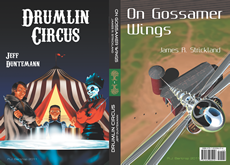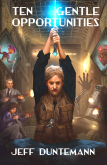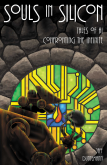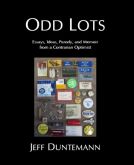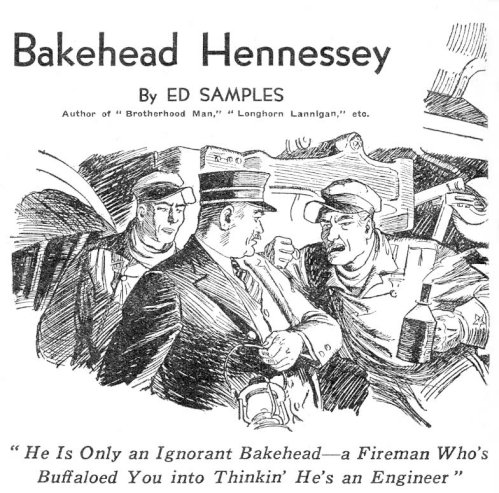
Back in my Febrary 23, 2010 entry, I began a series about the pulp fiction mags of the first half of the 20th Century. Because most people would assume I’ll be talking about SF, I deliberately went elsewhere, to a category most of my readers have probably never even heard of: railroad fiction. I bought and have been reading some 1930s issues of Railroad Stories magazine, published by the Frank A. Munsey Company, which in 1882 basically invented pulp fiction mags as we know them.
I can give you a good flavor for the genre with a single 300-word excerpt, from a story called “Bakehead Hennessey,” by Ed Samples, in the August 1935 issue:
Barney softly coupled his two engines into the head car. An “air” man connected the hose. The compressors on the head engine cut in, racing, clicking, thumping, forcing the train line pressure up to ninety pounds. Barney glanced at his gage, then out toward the yard office, where Conductor Gardner was running to the platform with two sheaves of green and white tissue in his hands. Behind him waddled stout Superintendent Moran. A second later Old Tom Ryan was climbing down upon the brick platform to meet Gardner.
Barney watched him, glanced once more at his air gage, then toward the rear. An inspector’s light was saying: “Set the air.” He opened the valve, watched the needle swing back, then closed it; and wiping his hand on a piece of cotton waste, went striding toward the men who were comparing watches and reading train orders.
The conductor handed him his set of flimsies in silence. There were only three: two slow orders and the running order. He glanced at the latter.
“Running us as Second Seven?” he asked, looking at Gardner.
Gardner nodded. Barney read the order through. He knew that never in the history of the road had such a task been laid out for an engineer: to clip sixty minutes off the time of No. 7, the fastest train through the Rockies on any line.
Air pumps were racing. The pop valve on the 3775 opened and white steam climbed skyward. A dozen lights darted hither and yonder about the steel mail cars. Superintendent Moran came panting up to the group.
“We want action on this run tonight,” he began.
“What the hell’s the use uh puttin’ out a fast schedule for that sizzlin’ bakehead?” snarled Old Tom. “He’s got you fellers all buffaloed into thinkin’ he’s a hoghead. Hoghead! Bakehead! Bakehead Hennessey!”
‘Nuff train talk for ya? I’m the son of a passionate railfan and have researched railroads more than most people, but I still had to look some of this stuff up. A “bakehead” is a locomotive fireman, who stokes the engine manually or maintains the stoking machinery. A “hoghead” is the engineer of a freight train. “Flimsies” are train orders, often printed on something just a hair better than tissue paper. Nonetheless, if you know the jargon, this scene will be utterly clear to you, and back in 1935, this was not nostalgia but the way the railroad industry actually worked.
Nor is this unusual within the genre. In the two issues I’ve read so far, all the writing is precisely like this, in that what matters are the trains. The people are types, which isn’t to say they didn’t exist in the real world or are somehow badly drawn in the tale itself. (Not everyone is an American Original.) But descriptions of their internal conflicts and personal growth were not what the reader was paying for. In a way very much like the Tom Swift books I read in the early 60s, the railroad pulp stories (and I’m guessing all pulp stories) were created to help people imagine themselves in certain roles and in certain situations. The people (thinly) depicted in the stories were like halloween costumes, in a way, to be put on by people who wanted to imagine themselves as railroad engineers and brakemen, or perhaps remember being railroad engineers and brakemen years ago.
This should be obvious, and it may be obvious to you, but I’m amazed at how some people just don’t understand why pulp fiction was ever popular. A lot of people would consider the railroad pulps bad fiction because they focus on technology (railroad tech, such that it was in 1935) rather than inner conflict and growth. Swap in “spaceflight” for “railroads” and you’ll have pulp SF of the same era. The railroad pulps had their share of adventure and fistfights and gunplay, but I was amazed at how close the action stayed to the tracks. And just as superb writers like Robert A. Heinlein stepped aside from the action to teach lessons on orbital dynamics, the railroad pulp authors sometimes taught lessons about their beloved technology. Read this excerpt from “When Destiny Calls” by E. S. Dellinger, the cover story in the August 1935 issue. It’s dense, but if you love trains you’ll understand the frightening energy contained in a boiler full of steam (enough to lift a 100-ton locomotive two and a half miles into the air) as well as how the devastating boiler explosions common during the steam era actually happened. I’ve ridden behind a couple of steam locos on tourist lines. That excerpt gave me chills.
Which, of course, was part of the package. The firms that published pulp fiction knew exactly what their customers wanted: a sense of being somewhere else, somewhere vivid and colorful, somewhere better and more exciting than a boarding house during the Great Depression, after a twelve-hour day at a mindless job in a sweltering factory that paid a quarter an hour.
The pulps were hugely successful for quite awhile. The writing wasn’t great, but it was nowhere near as bad as people make it out to be. Much of its “badness” was the focus on action, setting, ideas, and a certain sort of culture. The words could be carelessly arranged, but words can be fixed, and there is a particular skill in creating vivid settings and action scenes that few people understand until they realize that they don’t have it. The concept of pulp fiction deserves better than it’s gotten in recent decades. It didn’t even completely disappear, though the psychology is a little different these days. More in Part 3.

